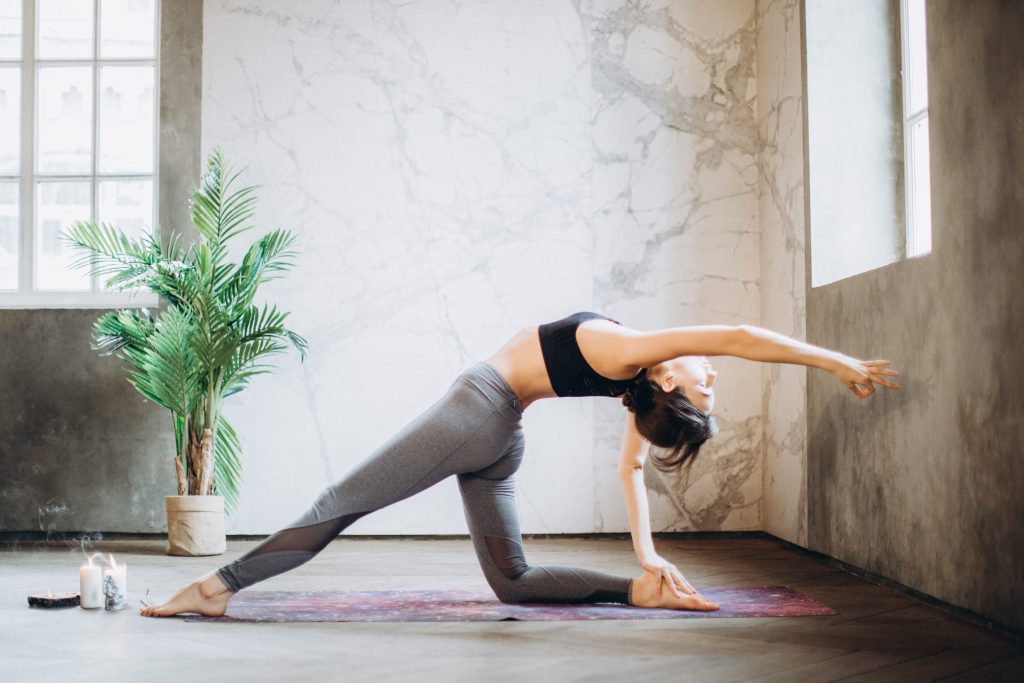Discover how incorporating yoga and Pilates into your postpartum routine can aid in core strengthening and pelvic floor recovery.
Can Yoga and Pilates Help with Postpartum Core Strengthening and Pelvic Floor Recovery?
Bringing a little one into the world is a beautiful and life-changing experience. But along with the tiny bundle of joy comes a host of physical changes for the new mom. Understanding how to take care of your body during the postpartum period is crucial for a healthy recovery. One popular approach to postnatal wellness is incorporating both yoga and Pilates into your routine. These mindful movement practices can help you rebuild your core strength and restore your pelvic floor. So, let’s dive in and explore the benefits of yoga and Pilates for postpartum core strengthening and pelvic floor recovery!
Understanding Postpartum Body Changes
After giving birth, your body goes through numerous transformations. From stretched abdominal muscles to weakened pelvic floor muscles, it’s essential to be aware of these changes in order to address them effectively. Let’s take a closer look at how postpartum impacts your core and pelvic floor.

The Impact on the Core and Pelvic Floor
During pregnancy, your growing baby puts pressure on the abdominal muscles and pelvic floor. This can lead to a separation of the rectus abdominis muscles known as diastasis recti. Diastasis recti is a condition where the left and right sides of the abdominal muscles separate, causing a bulge in the middle of the abdomen. It is important to note that diastasis recti can affect both men and women, but it is more common in women, especially after pregnancy.
Additionally, the pelvic floor muscles tend to weaken during pregnancy and childbirth, resulting in issues such as urinary incontinence. The pelvic floor muscles are a group of muscles that support the bladder, uterus, and rectum. They play a crucial role in maintaining continence and providing stability to the pelvic organs. Weak pelvic floor muscles can lead to urinary leakage, pelvic organ prolapse, and sexual dysfunction.
By incorporating yoga and Pilates into your routine, you can engage these muscles and facilitate their recovery. Yoga and Pilates exercises focus on strengthening the core and pelvic floor muscles, improving flexibility, and promoting overall well-being. These exercises can help restore the strength and function of the abdominal muscles and pelvic floor, reducing the symptoms of diastasis recti and urinary incontinence.
The Role of Hormones in Postpartum Recovery
Hormonal fluctuations are another aspect of the postpartum journey. The levels of estrogen, progesterone, and relaxin – a hormone that loosens ligaments during pregnancy – rapidly decrease after giving birth. These hormonal changes can affect the stability of your joints and make it imperative to rebuild your core strength and pelvic floor stability effectively.
Estrogen and progesterone are hormones that play a crucial role in maintaining the health of the reproductive system. During pregnancy, these hormones are produced in high amounts to support the growth and development of the fetus. However, after childbirth, the levels of estrogen and progesterone drop significantly, which can lead to mood swings, fatigue, and changes in the menstrual cycle.
Relaxin, on the other hand, is a hormone that helps relax the ligaments and joints in the pelvis to prepare for childbirth. While relaxin is essential during pregnancy, its levels decrease rapidly after giving birth. This sudden decrease in relaxin can affect the stability of the joints, making it important to engage in exercises that strengthen the core and pelvic floor muscles.
Rebuilding core strength and pelvic floor stability after childbirth is crucial for overall postpartum recovery. By understanding the impact of pregnancy on these areas and the role of hormones in the recovery process, you can take proactive steps to address these changes effectively. Incorporating exercises that target the core and pelvic floor, such as yoga and Pilates, can help restore strength, improve stability, and enhance overall well-being.
The Basics of Yoga and Pilates
Before we dive into the specifics, let’s explore the fundamentals of these two practices – yoga and Pilates.
Yoga and Pilates are both popular forms of exercise that offer numerous physical and mental benefits. They are often practiced together, as they complement each other in many ways. While they share some similarities, they also have distinct differences that make each practice unique.
Core Principles of Yoga
Yoga, an ancient practice originating from India, combines physical postures, breath control, and meditation. It focuses on aligning mind, body, and spirit. By practicing yoga, you can improve strength, flexibility, and balance while promoting overall well-being.
Yoga offers a holistic approach to fitness, addressing not only the physical aspect but also the mental and spiritual aspects of well-being. It encourages self-reflection and self-awareness, allowing practitioners to connect with their inner selves and find inner peace.
One of the key principles of yoga is the concept of “asanas,” which refers to the physical postures. These postures are designed to stretch and strengthen the body, promoting flexibility and improving muscle tone. Each asana has specific benefits for different parts of the body, targeting various muscle groups and promoting overall physical health.
In addition to the physical postures, yoga incorporates breath control, known as “pranayama,” which involves various breathing techniques. By focusing on the breath, practitioners can calm the mind, reduce stress, and increase mental clarity. The combination of physical movement and breath control creates a harmonious flow of energy throughout the body, promoting a sense of balance and well-being.
Core Principles of Pilates
Developed by Joseph Pilates in the early 20th century, Pilates is a low-impact exercise method that aims to strengthen the core muscles. It emphasizes proper alignment, breathing, and controlled movements. Pilates can improve posture, increase body awareness, and enhance muscular endurance.
The core principles of Pilates revolve around the concept of “core stability.” The core muscles, including the abdominals, back, and pelvic floor, play a crucial role in providing support and stability to the spine and pelvis. Pilates exercises focus on activating and strengthening these core muscles, leading to improved posture and overall body alignment.
One of the key principles of Pilates is the emphasis on precision and control. Each movement is performed with intention and awareness, ensuring that the correct muscles are engaged and that the body is aligned properly. This attention to detail helps to prevent injuries and promotes efficient movement patterns.
Pilates also incorporates breathing techniques, similar to yoga, to enhance the mind-body connection. By coordinating breath with movement, practitioners can deepen their focus and engage the core muscles more effectively. The controlled breathing patterns in Pilates help to oxygenate the body, increase circulation, and promote relaxation.
In addition to core strength, Pilates also targets other muscle groups, including the arms, legs, and glutes. The exercises are designed to improve flexibility, balance, and overall body strength. With regular practice, Pilates can help to sculpt and tone the body, creating long, lean muscles.
Both yoga and Pilates offer unique benefits and can be adapted to suit individual needs and preferences. Whether you are looking to increase flexibility, build strength, reduce stress, or improve overall well-being, incorporating these practices into your fitness routine can be highly beneficial.
Yoga and Core Strengthening
When it comes to rebuilding your core strength post-pregnancy, yoga can be an excellent tool. Let’s explore some key yoga poses designed to target the core muscles.
Key Yoga Poses for Core Strengthening
1. Downward-facing Dog: This pose engages the entire body, including the core, arms, and legs. It strengthens the abdominal muscles while stretching the back and hamstrings.
Not only does Downward-facing Dog provide a deep stretch for the back and hamstrings, but it also activates the core muscles. As you press your hands into the mat and lift your hips towards the ceiling, you engage your abdominal muscles, helping to build strength and stability in the core.
2. Boat Pose: By balancing on your sit bones and lifting your legs, you activate the deep core muscles. This pose strengthens the abs and improves overall balance.
Boat Pose is a challenging yoga pose that requires a strong core. As you balance on your sit bones and lift your legs, you engage the abdominal muscles, including the rectus abdominis and the transverse abdominis. This pose not only strengthens the core but also improves balance and stability.
3. Plank Pose: Holding a plank position activates the entire core, including the rectus abdominis, obliques, and transverse abdominis. It also engages the arms, shoulders, and legs, making it a full-body exercise.
Plank Pose is a powerful yoga pose that targets the core muscles and works the entire body. By holding a straight line from your head to your heels, you engage the rectus abdominis, obliques, and transverse abdominis. Additionally, the arms, shoulders, and legs are also activated, making it a comprehensive full-body exercise.
The Role of Breathing in Yoga
In addition to the physical poses, yoga emphasizes the importance of breath control. Proper breathing techniques can help activate and strengthen the deep core muscles, further enhancing the effectiveness of your practice.
When practicing yoga, breath control is essential. Deep, intentional breathing not only helps to calm the mind and relax the body but also plays a crucial role in engaging and strengthening the deep core muscles. By focusing on your breath and coordinating it with your movements, you can enhance the effectiveness of your yoga practice and deepen your connection to your core.
As you inhale, imagine your breath filling your abdomen, expanding and activating the deep core muscles. As you exhale, visualize drawing your navel towards your spine, further engaging the core. By incorporating breath control into your yoga practice, you can optimize the benefits of core strengthening and create a more holistic and mindful experience.
Pilates and Pelvic Floor Recovery
Now, let’s shift our focus to Pilates and its role in restoring the strength and function of your pelvic floor.
Pilates Exercises for Pelvic Floor Strengthening
1. Pelvic Tilts: This exercise involves tilting your pelvis backward and forward while engaging your pelvic floor muscles. It helps improve flexibility and strength in the pelvic area.2. Leg Lifts: By lying on your back and lifting one leg at a time, you activate the deep core and pelvic floor muscles. This exercise promotes stability and control.3. Bridging: This movement involves lifting your hips off the ground while pressing through your feet and engaging the glutes and pelvic floor. Bridging strengthens the entire posterior chain, including the pelvic floor.
The Importance of Alignment in Pilates
Pilates places a strong emphasis on proper alignment throughout the exercises. By maintaining correct alignment, you ensure that you’re engaging the right muscles and maximizing the benefits of each movement. This attention to alignment is particularly important for a safe and effective pelvic floor recovery.
Integrating Yoga and Pilates into Your Postpartum Routine
Now that we’ve explored the benefits of both yoga and Pilates individually, it’s time to understand how to integrate them into your postpartum routine effectively.

Creating a Balanced Workout Schedule
Start by incorporating yoga and Pilates into your weekly routine gradually. Consider alternating between the two practices or combining them in a single session. Listen to your body and give yourself ample time to rest and recover between workouts. Building a balanced schedule will help you reap the full benefits without overexerting yourself.
Listening to Your Body’s Signals
As a new mom, it’s essential to tune in to your body’s signals during your yoga and Pilates practice. Modify or skip any exercises that don’t feel right for you. Each person’s postpartum journey is unique, so honor your individual needs and limitations. Remember, gentle progress is the key to a successful recovery.
With a playful attitude and a commitment to self-care, yoga and Pilates can be an empowering tool for postpartum core strengthening and pelvic floor recovery. By understanding your body, immersing yourself in these mindful practices, and giving yourself the time and space to heal, you’ll be well on your way to a stronger, healthier postpartum journey.



